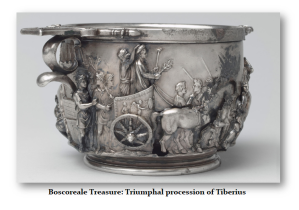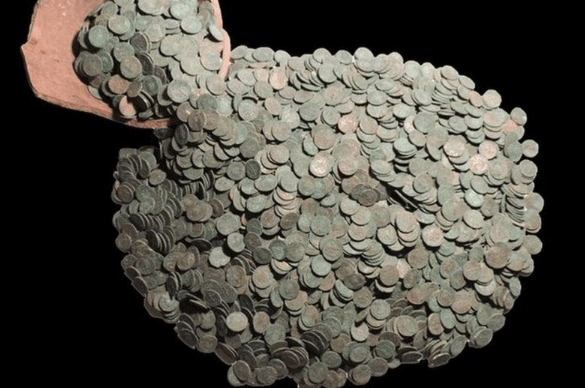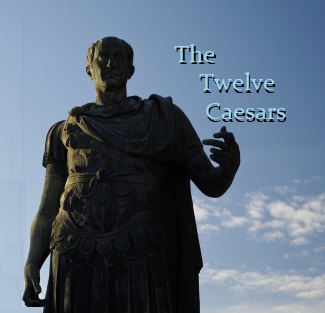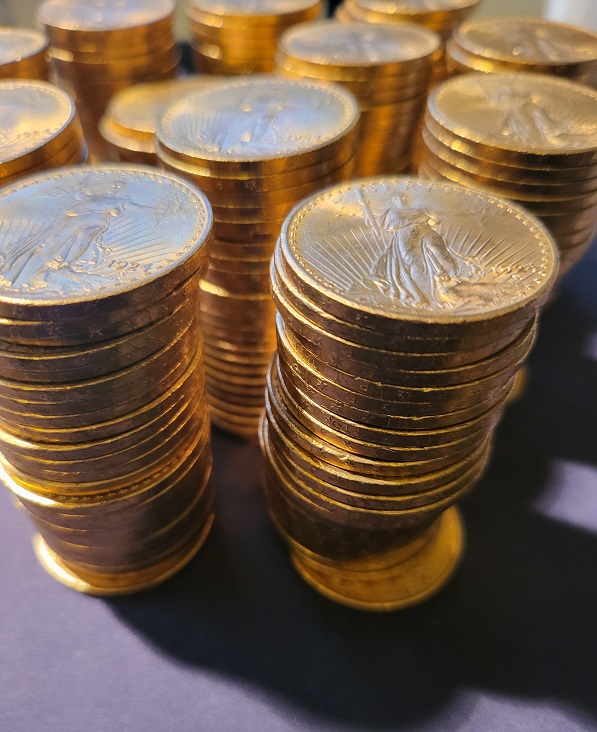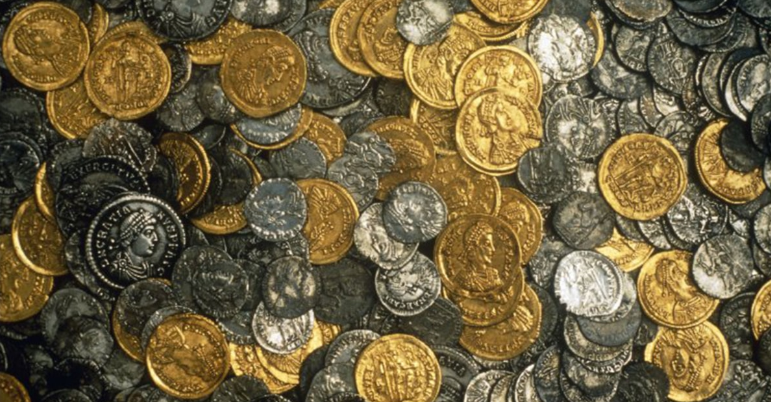Perhaps one of the most famous discoveries from Pompeii is known as the Boscoreale Treasure. This discovery came to light in 1895, when the treasure was uncovered among volcanic ash from the eruption of Mount Vesuvius on August 24, 79 AD. In 1895, excavations at a Roman villa at Boscoreale on the slopes of Vesuvius unearthed a remarkable hoard of coins, 109 items of silverware, and over 1,000 gold aurei, the latest of which dates to 78 AD with many pieces dating back decades prior, such as the gold aureus of Nero (54-68 AD). The villa that held the coins lay undisturbed until 1876, yet the coin hoard lay undiscovered for almost another 30 years. The original owner hid the treasure in a wine tank prior to the eruption, so it was not immediately discovered.
Unfortunately, the Boscoreale coins were never formally studied before being dispersed into the market, so we do not know the full extent of the find. Nevertheless, the coins are easily identifiable, and a distinctive feature of this hoard from Boscoreale is their deep red toning. The term “Boscoreale” is now used in auction catalogs to describe similar discoloration on any Roman gold. The coinage of Boscoreale does tend to be well preserved.
The Boscoreale Treasure included a remarkable set of tableware reflecting the quality of Roman silverwork in the 1st century AD. The decoration on these two cups illustrates a most curious theme. There are Epicurean maxims (engraved in dots) and the skeletons of poets and Greek philosophers, representing an invitation to enjoy the present, for death comes to us all.
Two silver cups found are famous for their strange decoration. A Latin inscription on the base of one of the cups gives their weight and the name of their owner, Gavia. The ring of skeletons depicted on these two cups has similar and complementary decorations depicting tragic and comic poets and famous Greek philosophers beneath a garland of roses. Greek inscriptions engraved in dots form captions and are accompanied by Epicurean maxims such as, “Enjoy life while you can, for tomorrow is uncertain.”
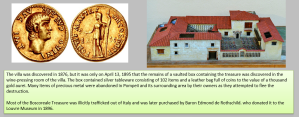
Clotho, one of the Fates, looks on as Menander, Euripides, Archilochus, Monimus the Cynic, Demetrius of Phalera, Sophocles, and Moschino provide a caustic and ironic illustration of the fragility and vanity of the human condition. But the main message of the cups decoration is that life should be enjoyed to the fullest. Zeno and Epicurus, the founders of the Stoic and Epicurean philosophies in the 4th century BC, confront each other before two mating dogs — a detail of some significance, as it represents the triumph of Epicureanism.
Silver and gold coins from ancient times have survived, as well as bronze. Silver can be affected by the sea and at times when it is debased. Bronze requires certain conditions to survive in good form. So if you intend to bury your gold and silver in the backyard, keep in mind that humanity has been doing this in times of trouble since before recorded history.


